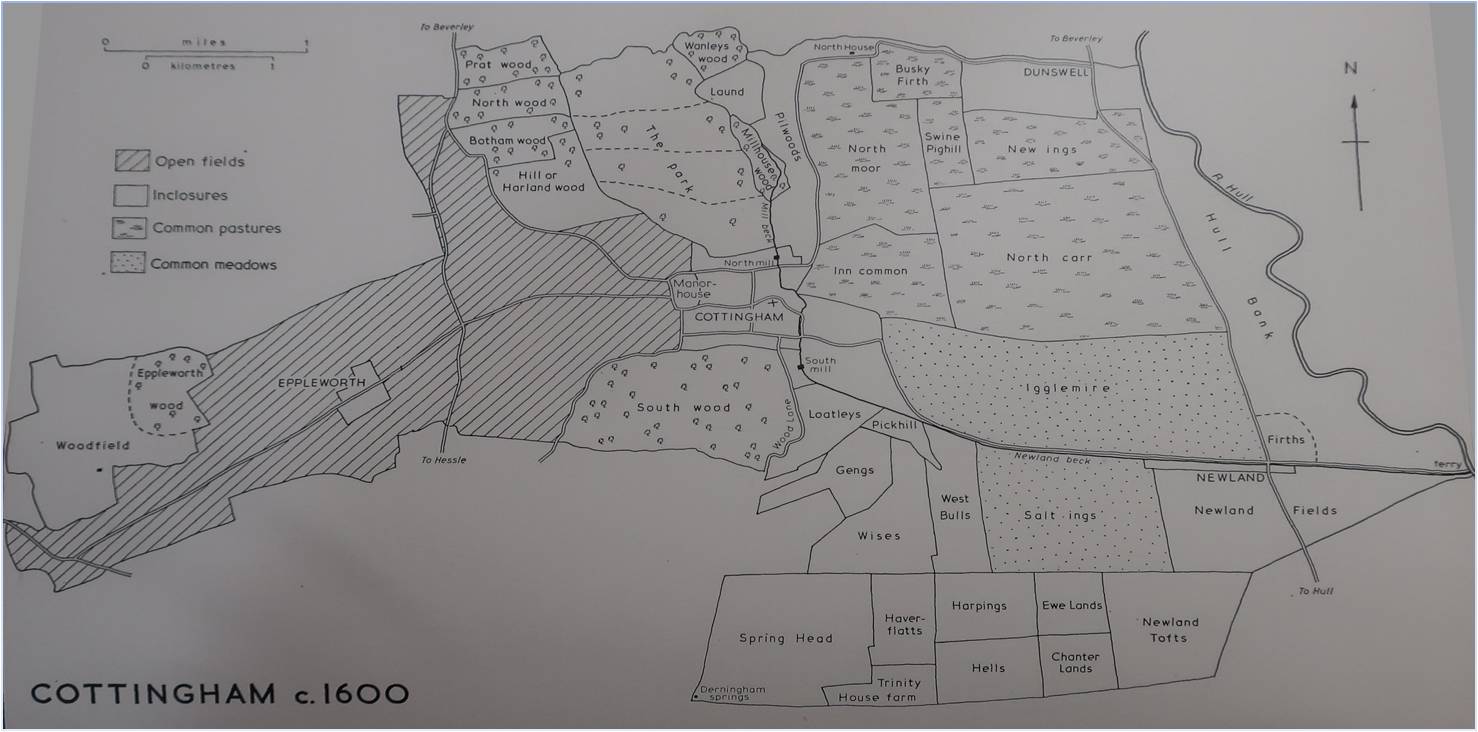The parish of Cottingham is situated in what was once the wapentake of Harthill (Hunsley Beacon division), part of the historical East Riding of Yorkshire (see maps in Introduction). Before the 1832 boundary changes, the parish was one of the largest in the East Riding, extending over more than 11 km. from east to west and 8 km. from north to south, and covering the sub-parishes and localities of Dunswell, Hull Bank, Newland, Raywell, Spring Head and part of Willerby, all of which were eventually lost to the surrounding parishes. However, Cottingham still prides itself in being “the largest village in England”.
Domesday records that after the Conquest Cottingham passed from Gamel, son of Osbert or Osmund, to the Norman Hugh, son of Baldric. Hugh was awarded lands in a large number of localities in Yorkshire and beyond, but his Yorkshire lands were forfeited, and shortly after 1089 passed to Robert Front-de-boeuf of Etoutteville in Normandy, the earliest recorded member of the family known in England as the Stutevilles. Robert was also to forfeit his lands following the battle of Tinchebray in 1106, though Cottingham was restored to his grandson. The parish descended through family members bearing the name Stuteville until the death of Joan in 1246, when it passed to her son, Baldwin Wake. Cottingham then descended via the female line, passing through many old families, some of whose names became associated with the Pickerings (including Scrope, Broomfleet, Neville, Darcy and Hastings), but often reverted to the Crown. The final owners were the Haworth family.
In 1487, while in the hands of the Crown, the revenues of part of the manor of Cottingham were assigned to the defence of Berwick-on-Tweed. These lands were sometimes called Barnard Castle lands, reflecting their association with the manor situated in County Durham, and it is probably safe to assume that the castle at Cottingham, the remains of which have been known as Baynard Castle since at least the mid 19th century, were named after them. The first mention of a castle of Cottingham was sometime between 1170 and 1180. It was enclosed and fortified in 1201, moated in 1272 and crenellated in 1327. However, the castle in which Kings John and Edward I had been entertained was described as ruinous in 1349. During his itinerary of 1538 John Leland described it thus: “Entering into the South Part of the great Uplandisch Town of Cotingham, I saw wher Stutevilles Castelle, dobill dikid and motid, stoode, of the which nothing now remanynith”. Four timber and thatch manor houses were still standing in the grounds in the 17th century, but only the Sarum Manor or Old Manor House, which was granted by the Crown to Sir Thomas Hastings in 1554, remains today with its with 20th-century additions and alternations. The outer banks of the castle site, which enclosed approximately 4.5 hectares, were flattened in the 20th century and modern houses have been built on most parts of them. However, the ditch can still be seen in a number of gardens facing the surrounding roads, in particular on the south side.
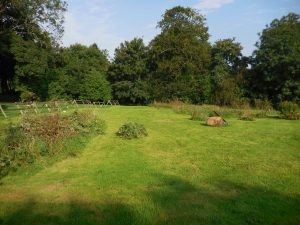 | 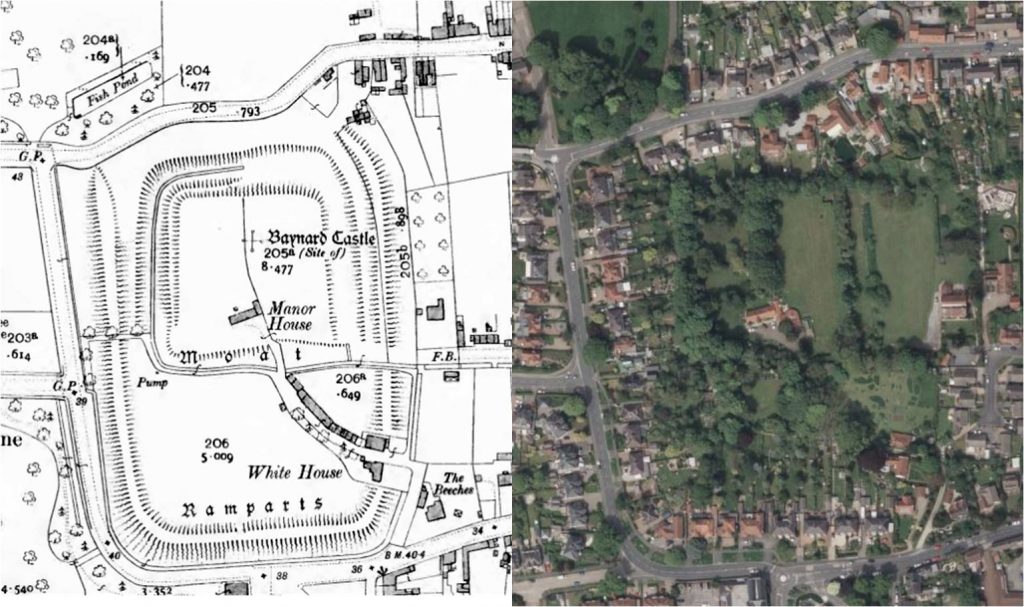 | 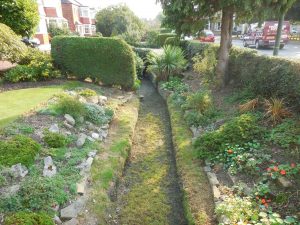 |
Legend has it that either the castle or one of the manor houses was deliberated destroyed on the orders of its owner in 1541, who, expecting a visit from King Henry VIII and fearing the possibility of the King’s amorous attentions towards his wife and the repercussions on himself, ordered his retainers to set fire to the house, so as to avoid the monarch’s visit. Unfortunately this lusty tale does not bear chronological scrutiny, neither in the case of the castle nor the manor houses.
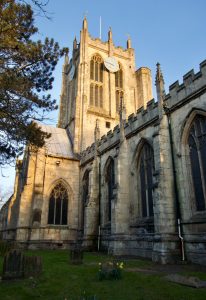
© Paul Harrop, 2020
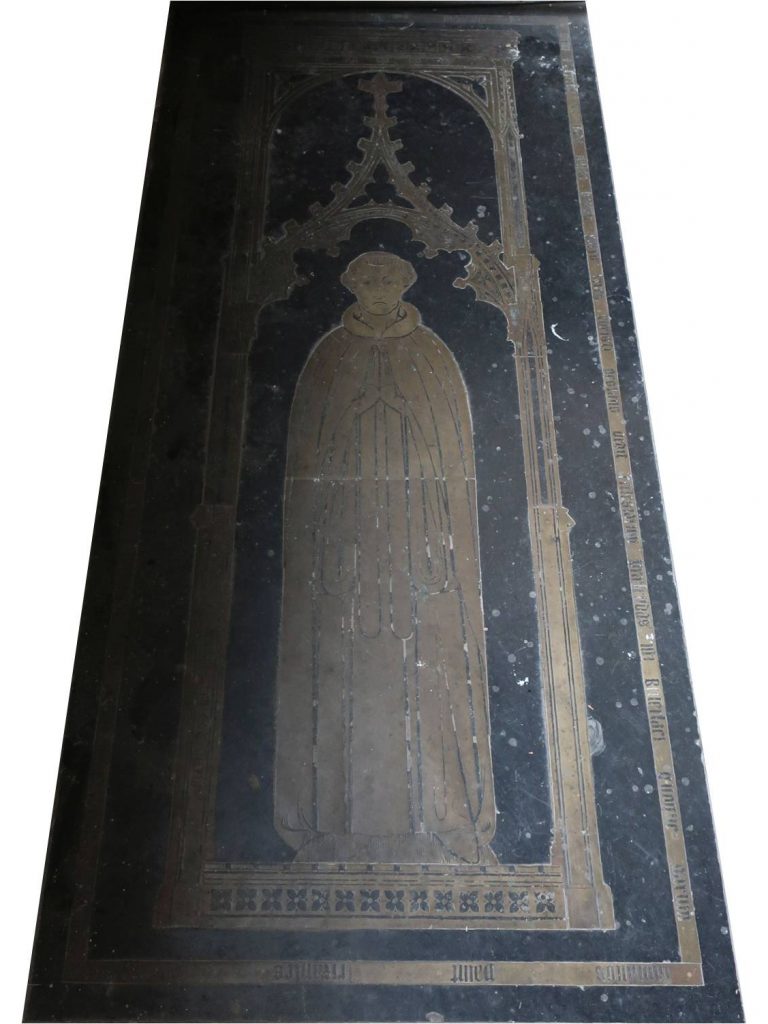
The church of St. Mary is a large, crenellated gothic building, built of stone between 1272 and 1370. The nave, chancel, south porch, aisles and transepts date back to the 14th century, the central tower to the 15th. The ancient, undated tomb that stands in the chancel is said by some to be that of the founder, Nicholas de Stuteville, who built the chancel and died in 1384, and by others to be Nicholas de Luda, a Capuchin friar. (Nicholas de Stuteville and Nicholas de Luda (of Louth, Lincolnshire) were perhaps one and the same, owing to the practice among medieval monks of dropping their family surnames and adopting a ‘monastic byname’, derived from a place name.) The church also contains wall tablets commemorating the Burton family, intially of Cottingham and later of Hotham, and a Grecian monument in memory of Benjamin Blaydes Haworth. The interior was renovated in 1845 and much exterior restoration was carried out in 1892.
Newland was a sub-manor of the parish of Cottingham, situated near its eastern extremity. In 1529 it passed into the hands of the Percy family, who held it until the early 17th century. Over the centuries Newland expanded to become a middle class area with some fine houses. An early example is Hull Bank House, built – as its name suggests – on the west bank of the river Hull as a country house for the Burton family in about 1755. (It has been known as Haworth Hall since coming into possession of the Haworths). Alterations were carried out to the entrance hall and the main stairwell on the west side in about 1770 and its exterior was given a stone front. At the same time semi-octagonal brick extensions were added to the north and south sides, and some internal redecoration took place. Further alterations were made in about 1790 and 1820. The elm avenue leading to the Hull-Beverley road was later felled and much of the park which lay between the road and the river is now covered with suburban housing.
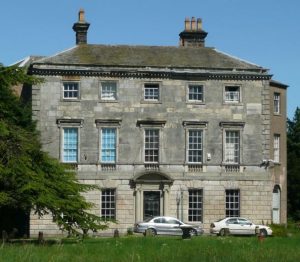
At the south-eastern extremity of the parish of Cottingham lay the marshland of Newland Tofts which would become the site of The Avenues. Made up of four parallel roads, they were soon occupied by the merchants of Hull, who built their often grand houses there in the 1870s, and The Avenues are still a sought after address today, despite the fact that Princes Avenue, running along their eastern extremities, has become a popular nightlife destination.
By the time the College of Education was built in 1913 on what became known as Cottingham Road, Newland had become a suburb of Hull. The University of Hull was built on neighbouring land in 1927 and took over the College building when the former moved to other premises. The ever expanding University campus now surrounds on all but one side the oldest seat of learning of the three, Newland High School.
Haltemprice was originally an extra-parochial area, became briefly part of Hull, later a parish in its own right, joined Cottingham as part of an urban district and currently forms part of a number of civil parishes. In 1320 the pope granted Thomas Wake a licence to found an Augustinian priory in Cottingham which was to incorporate the already existing church, but a secure title to the site could not be obtained, so a further licence was issued in 1325-26 to move the priory two miles further south to the hamlet of Newton, which became known as Haltemprice after the name given to the priory, Haulte Emprise (medieval French meaning high endeavour). Thomas Wake bestowed many gifts on his priory, but by the time he died in 1349 and before it had been fully completed, it had already begun its decline. This was brought on by mounting debts, administrative incompetence and natural disasters, which reached such an extent that from 1415 to 1458 it was exempt from royal taxation. Haltemprice Priory was finally dissolved on 12 August 1536. All that remains standing on the site is the farmhouse, dating from the late 15th to the early 16th centuries, with late 18th century alterations, which has gone from a dilapidated and pillaged ruin to an extensively rebuilt and refurbished private residence, a mix of the original farmhouse brick, with incorporated stonework from the priory, and new installations designed in keeping with the house’s history.
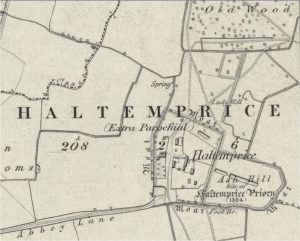 | 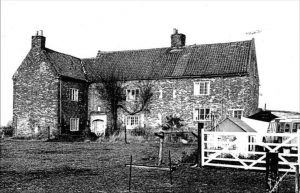 | 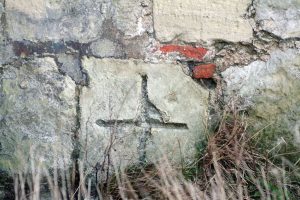 | 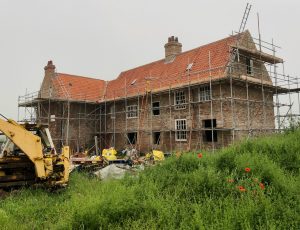 |
The Pickerings of Auckland St. Andrew are Y-DNA matches of the Bruces. It can therefore be assumed that at least one of the Pickerings of Killington made his way back across the Pennines and established himself in County Durham. Joseph was one of this Pickering’s descendants who moved to East Yorkshire, where he was a farmer at Hull Bank. His grandson, Robert Wardle Pickering, emigrated to the state of Ohio, USA, where his descendants still live today.
The Pickerings of Holderness are well represented in the parish of Cottingham; this is especially the case for the author of these lines. My sister, cousin and I were all born at The Poperinge Nursing Home at 52 South Street, Cottingham; our great aunt Ruth Eleanor was running her own pastry and confectionery business at 7 Princes Avenue, Newland, in 1922; my parents lived during the early years of their marriage in a flat at 105 Princes Avenue; my uncle built and lived in a modern house at the Princes Avenue end of Marlborough Avenue (both the latter are shown side by side in Hull History Nerd’s excellent Lost Villages of Hull: Newland at 6’46”); finally I attended Newland High School in the 1960s to which I am grateful for giving me a thirst for knowledge.
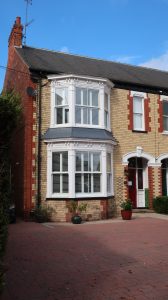 | 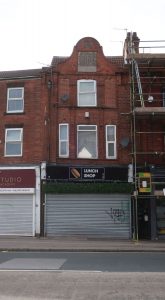 | 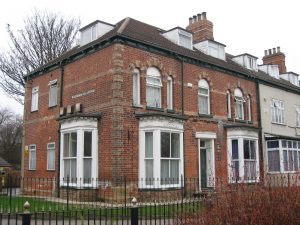 105 Princes Avenue Newland | 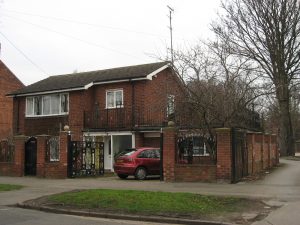 2a Marlborough Avenue Newland |
Sources:
Cottingham:
https://www.genuki.org.uk/big/eng/YKS/ERY/Cottingham
https://en.wikipedia.org/wiki/Cottingham,_East_Riding_of_Yorkshire
https://opendomesday.org/place/TA0432/cottingham
Victoria History of the County of York, East Riding, vol. 4, p. 56 (not online)
The History and Antiquities of the Town and Minster of Beverley, pp. 458-471: https://books.google.fr/books?redir_esc=y&id=LYYKAQAAMAAJ&q
History and Topography of Yorkshire, vol. 2, York, Ainsty, East Riding, pp. 535-541: https://books.google.fr/books?redir_esc=y&id=unEKAQAAMAAJ
Early Yorkshire Charters, vol. 9: The Stuteville Fee (not online)
Baynard Castle: https://en.wikipedia.org/wiki/Baynard_Castle,_Cottingham
Old Manor House: https://historicengland.org.uk/listing/the-list/list-entry/1347016?section=official-list-entry
Hull Bank House: https://historicengland.org.uk/listing/the-list/list-entry/1197620?section=official-list-entry
Church of St. Mary: https://historicengland.org.uk/listing/the-list/list-entry/1103394?section=official-list-entry
Locus, Sanctus, et Virtus: https://www.brepolsonline.net/doi/abs/10.1484/J.JMMS.5.125364?journalCode=jmm
Lost Villages of Hull: Newland: https://www.youtube.com/watch?v=LLzAXQkqJas
Haltemprice and Priory of Haltemprice:
Victoria History of the County of York, East Riding, vol. 3, pp. 213-216: https://www.british-history.ac.uk/vch/yorks/vol3/pp213-216
Haltemprice Priory: https://web.archive.org/web/20110516155043/http://www.yorkshirehistory.com/haltemprice.htm
https://en.wikipedia.org/wiki/Haltemprice_Priory
Haltemprice Priory Farmhouse PHDAS: https://web.archive.org/web/20120419002818/http://www.eastriding.gov.uk/padocs/OCT2011/E3390DF8091C11E1999097C28492E0A8.pdf
Newland:
Lost Villages of Hull: Newland: https://www.youtube.com/watch?v=LLzAXQkqJas

